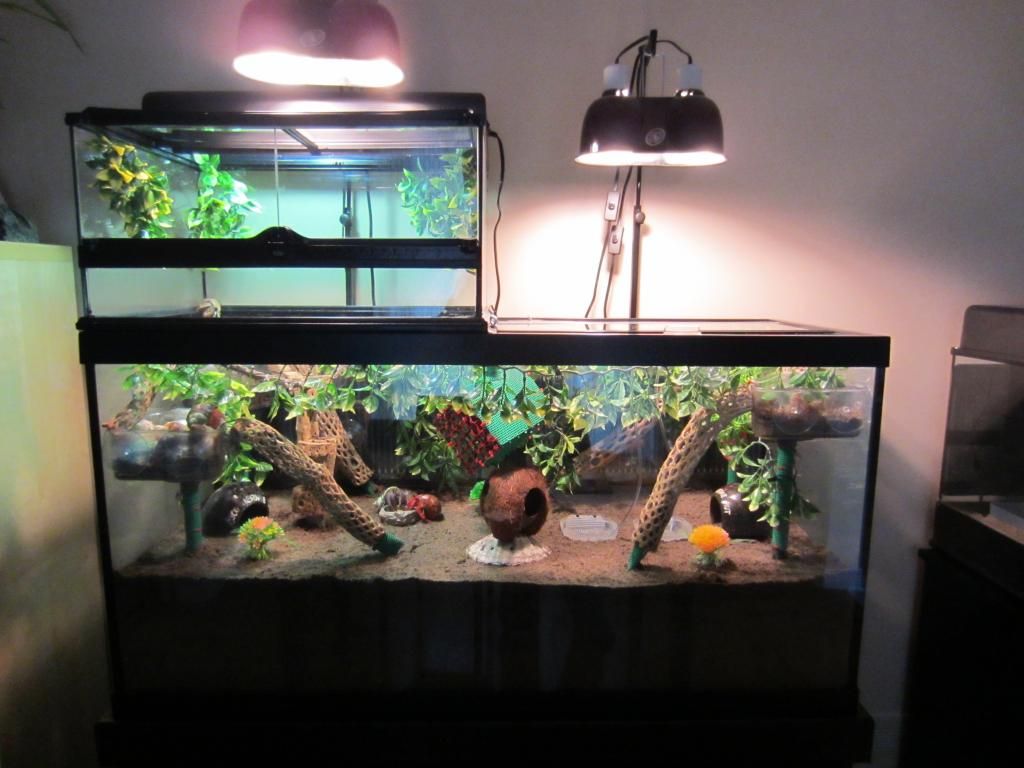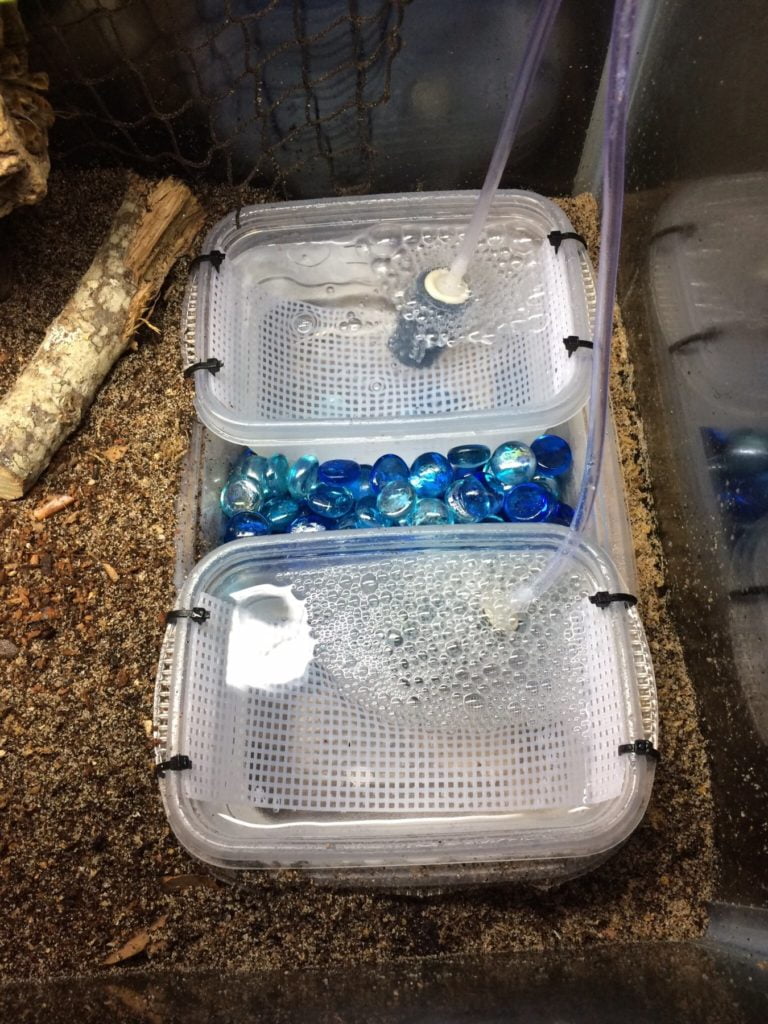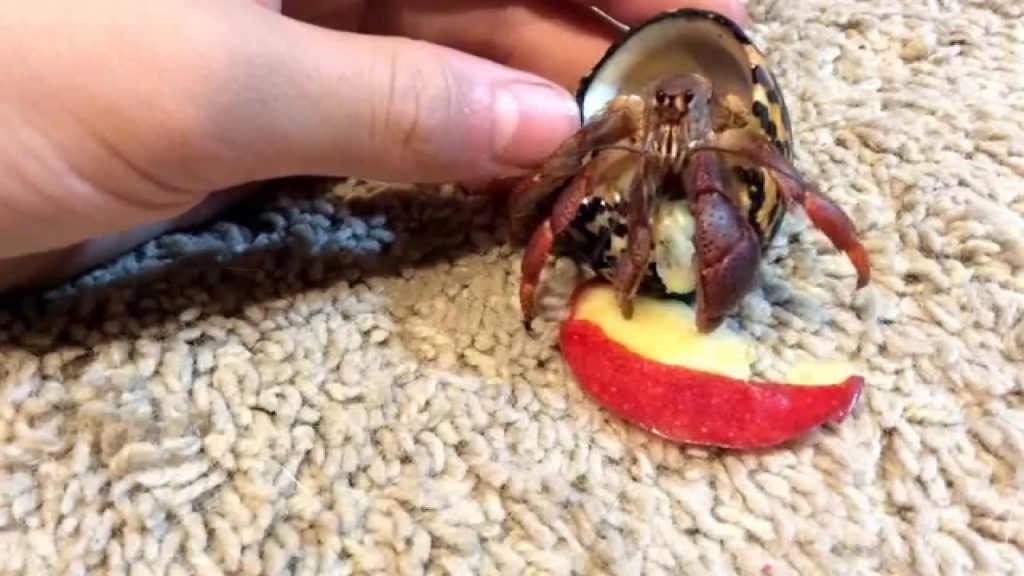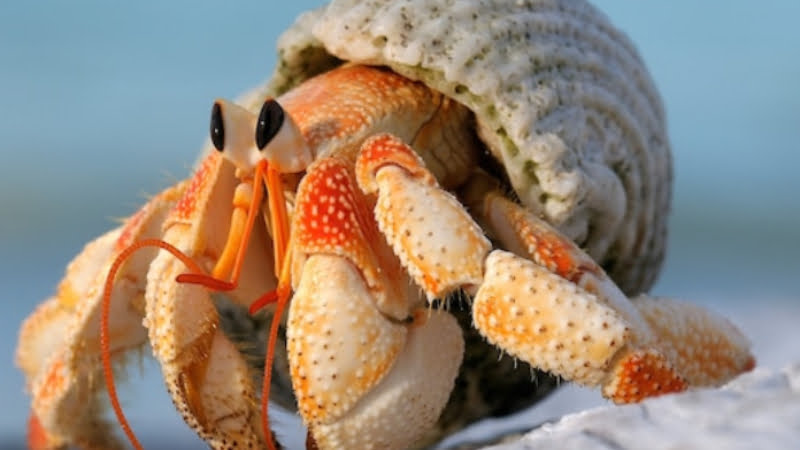Acclimating hermit crabs can be a difficult task. This is especially true if you’re new to the hobby and don’t have much experience with acclimation techniques. It’s important to make sure that they acclimate safely, or else their health may deteriorate quickly.
In this blog post, we will discuss 6 easy ways to house your hermit crabs so that they acclimate better!
See also:
- How Many Hermit Crabs Per Gallon? (4 Questions To Decide)
- Learning Top 5 Unbelievable Facts About Hermit Crab Pregnant
Hermit Crabs Fact File
- Lifespan: About 10 to 15 years
- Size: Golf ball size to tennis ball size
- Diet: Pellets, fruits, and veggies
- Home: 35 to 75-liter tank
6 Steps To Acclimating Hermit Crabs To Your Tank
Hermit crabs are happiest on tropical shores. These specialized creatures come from warm climates and need to live in warmer conditions that replicate their natural habitat.
Picking the tank
Hermit crabs will feel at home with either a glass or plastic tank. Choose small plastic homes without accessories as fish tanks, but use them only for temporary housing. The 10-gallon glass aquarium is better for hermits, who are social creatures and should always be kept in groups to avoid becoming depressed and introverted.

The substrate
The substrate of choice for hermit crabs is sand. What type you use depends on your budget and what’s available. Playground sand can be found at a home improvement store, but aquarium sands are fine as well – whether they’ve been previously used or not. You may want to sterilize the sand by baking it (at 300 degrees Fahrenheit)
One option is to use a pure fiber product designed for reptiles like the coconut-based bedding Forest Bedding. It’s almost like soil, so it works well for burrowing, and crushed coral is also an option but you may want to provide an area with Forest Bedding or sand as your hermit crabs may prefer these.
Maintaining proper temperature
Hermit crabs have a range of 72 to 80 degrees Fahrenheit (22 to 27 degrees Celsius) and should be kept in the temperature zone. The heaters should be used at least part of the time depending on where you live. In colder climates, both undertank heater or light can be used for regulating temperatures.
The UTHs can be placed under one end of the tank to provide a warmer temperature on one side than on the other. For better control of temperature, invest in either a thermostat or timer depending on your needs and install it into the heater’s power source. Monitor the temperatures both inside and close to where you are setting up
If the heater isn’t heating the tank well, try removing some substrates. This will maintain a temperature gradient. Make sure there is a range of temperatures and they are spread out in the habitat to give your hermit crabs a choice.
Lamps of different kinds can also provide heat for your tank to make up for what the UTH cannot do alone.
Lights
Although hermit crabs have been thought to be nocturnal and so providing lights could stress the animals, many people have found that low wattage light bulbs are suitable for them. It is also possible that they become more active with a little bit of light.
Make sure to provide a 12-hour light and dark cycle. This means the lights should be off at night, but you can use special nighttime bulbs if desired. Using high wattage light bulbs will overheat the tank so it’s not recommended.
Humidity
Along with the proper temperature, humidity in the hermit crab tank is also vitally important. Hermit crabs require a relative humidity of around 70 to 80 percent for their gills. If the air becomes too dry due to improper maintenance, it will essentially suffocate.
One way to help a hermit crab acclimate is by investing in a humidity meter, which you can find in the reptile section of your pet store. Excess humidity is not desirable either because it will cause condensation and encourage bacteria and fungus growth.
You can simply provide a dish of water in the tank to create humidity if your hermit crabs are enclosed with solid, closed walls.
Another way to increase the humidity level for your hermit crabs is trying using a natural sea sponge in a dish of water. The sponge lets moisture evaporate into the air very quickly and it needs replacing often, but it’s still better than the standard humidifier that most people use (which can accumulate bacteria).
Humidity control may become difficult if the lid is made of mesh or with vents. The cover can be modified by covering most of the top with plastic wrap or clear packing tape.
Cage furnishings
Three necessities for furnishing the cage include things to climb on, a water dish, and a food dish.
- Climbing: Land hermit crabs enjoy climbing, so opportunities to climb should be provided in their tank. Choya (or cholla) wood is ideal and it can provide them with a place to climb and the opportunity for exercise. Driftwood, coral rock, or other types of wood can also be used–from the reptile section at pet stores. Regularly change out items in the tank or aquarium to give your hermit crabs some variety. Some crab enthusiasts even build climbing structures using Legos for their animals.
- Water dish: To make sure that your hermit crab has access to both fresh and saltwater, you must use two water dishes. TThe aquarium should be big and deep enough for the crabs to climb into if they wish, but not so tall that they are likely to drown. Smooth river stones or pieces of coral can be used as ramps or steps for the crabs to get out of the water. You should also place natural sea sponges in the water dishes; some crabs will press on these to get a drink of water, and they help regulate humidity. The water given to the hermit crabs or used in the tank should be dechlorinated. Do not use regular table salt because it will kill your crabs.
- Food dish: For feeding dishes, you’ll want something shallow, sturdy, and easy to clean. You can find flattened heavy plastic dishes made to look like rocks in the reptile section. Alternatively, I recommend using natural seashells or ceramic bowls made for small animals for a more realistic environment._

How To Take Care Of A Hermit Crab At The Home Aquariums?
Essential equipment
Below is a list of the equipment needed to keep crabs healthy:
- A closed tank with sand. Make sure it has a tight cover to keep the crabs from escaping and enough airflow so moisture doesn’t build up inside.
- Adding water-conditioning fluid to neutralize chlorine and its byproducts in the water.
- Sea salt, the kind used for marine fish and crustaceans.
- Sand with enough depth to be at least 15cm.
- Water dishes, sea sponges, shallow food dishes, and a slotted scoop.
- Quarantine tank, a space for the crab to amp up its immune system in isolation for safety during molt.
- Hidey-holes for the crabs, so they can relax during the day.
- Extra shells of the correct sizes and shapes.
- Thermometers to measure the sand’s temperature and humidity levels.
- Branches and rocks to climb on.
- Providing moss in the tank and extra sea sponges to soak, so that humidity is at least 75%.
Exercise
New crab owners should take care to provide them with enough space for their physical needs. Crabs love climbing and crawling, so they are provided a sufficiently large container by their owner. If the owner is careful, he or she can walk the crabs across his/her hands held low over a soft surface. To do this, you should move your hand’s side by side, and not fingertip-to-fingertips. If they are too close together, the surface will be too narrow, and the hermit crab will feel scared.
Feeding
Hermit crabs are scavengers in the wild. They need both animal and vegetable matter to make them healthy, but commercial crab foods contain preservatives that hermit crabs should avoid. The real problem is that most commercial food has a single flavor repeated over time – this gets boring for hermit crabs.
Make sure to fully wash and prepare all vegetables and fruits before feeding them to your hermit crabs. Definitely stay away from anything with any type of preservative or salt. Raw, cooked, or even freeze-dried meat options are fine as well.
That’s not to say that everything always needs to be fresh. Stock up on an assortment of jars of baby foods, a few freeze-dried daphnia, bloodworms, tubifex, and shrimp from the aquarium section of the pet store, and a couple of pieces worth of low-salt cat food.
Provide a couple of cuttlebones to make sure hermit crabs have the calcium they need. Cuttlebone is more commonly found in bird shops than pet stores.
Hermit crabs need two different types of water bowls: freshwater dish and saltwater dish. Making saltwater is different from making regular water because the iodine in table salt can harm them. Both dishes must be big enough for the crab to completely submerge themselves, but not so big they will drown if they try to crawl out.

FAQs
Can hermit crabs be acclimated in an aquarium?
Yes, of course. Youn can apply my 6 methods above to succeed in acclimating your hermit crabs in the tank. Please be noted that take special care after housing them.
Can hermit crabs live without saltwater?
Just because hermit crabs are often found in saltwater, that doesn’t mean they don’t need fresh water as well. Providing both types of water is necessary, especially if you are unsure what type of crab you have in your home. You’ll find he will take a dip in either and drink from both types of waters.
What do hermit crabs need in their tank?
To make a hermit crab feel at home, you’re going to need plenty of climbing space, a substrate for molting, humidity, and warm temperatures. You also need to provide freshwater (dechlorinated aquarium salt only), and a variety of shells.
Conclusion
Prior to purchasing any hermit crabs, it’s important to do some research. This care sheet summarizes only the basic information you need. Before getting a freshwater or saltwater tank and taking on the responsibility of caring for these invertebrates, be sure to investigate details such as: setting up an enclosure with proper decorations and substrate; providing enough deep water, etc
I do hope that my blog post can help you and thank you for reading!

Annette M. Chaney is an experienced marine biologist with over 20 years of experience as an aquarist and fishkeeper. She started her first aquarium at a young age, filling it with frogs and goldfish obtained from the ten-cent pet store.
Annette grew up caring for and breeding African Cichlids, which led to a hobby in high school that doubled as a profitable means. Attending Reed College gave her time to solidify herself as an accomplished aquarium caretaker with an eye for sales. After that, from 2009 – 2013, she studied at Roger Williams University – one of the most prestigious universities for Aquaculture and Aquarium in USA. She is the founder of AquariumCircle since 2010.
